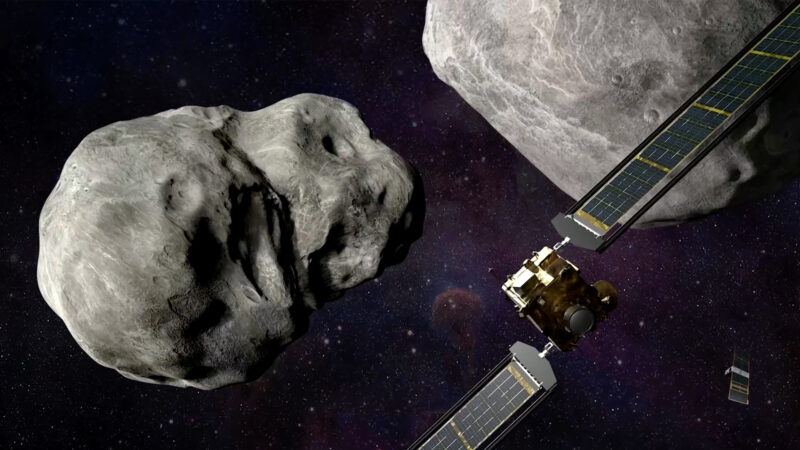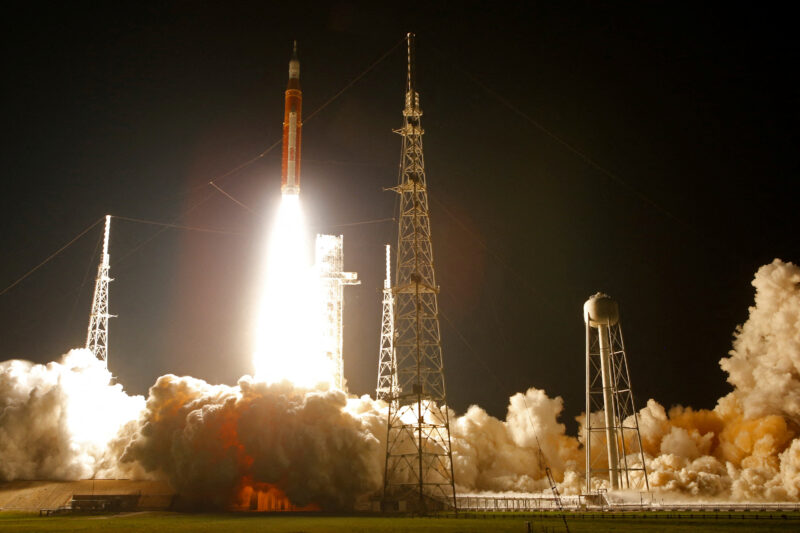Last month’s suicide test flight of the DART spacecraft did succeed in nudging an asteroid out of its natural orbit through sheer kinetic force.
That’s according to NASA on Tuesday, confirming that the test on September 26th marked the first time humanity altered the motion of a celestial body.
“This is a watershed moment for planetary defense and a watershed moment for humanity,” said NASA administrator, Bill Nelson.
Watch the video:
The target of the ‘Double Asteroid Redirection Test’ flight – or DART – was an egg-shaped asteroid named Dimorphos, roughly the size of a football stadium. It was orbiting a larger, parent asteroid called Didymos once every 11 hours and 55 minutes.
The aim was to fly the DART impactor vehicle – no bigger than a vending machine – directly into Dimorphos at about 14,000 miles closer to its larger companion.
“And now the team has confirmed that the spacecraft’s impact altered Dimorphos orbit around Didymos by 32 minutes and therefore, successfully moved its trajectory,” said Nelson. “In other words, DART shortened the 11-hour and 55-minute orbit to 11 hours and 23 minutes, and it moved it in another location. And that has been confirmed by the telescopes.”
The $330 million proof-of-concept DART mission, which took seven years to develop, also marked the world’s first test of a planetary defense system designed to prevent a potential doomsday meteorite collision with Earth.
Although NASA stressed the two asteroids, nor DART, posed any threat to earth.







